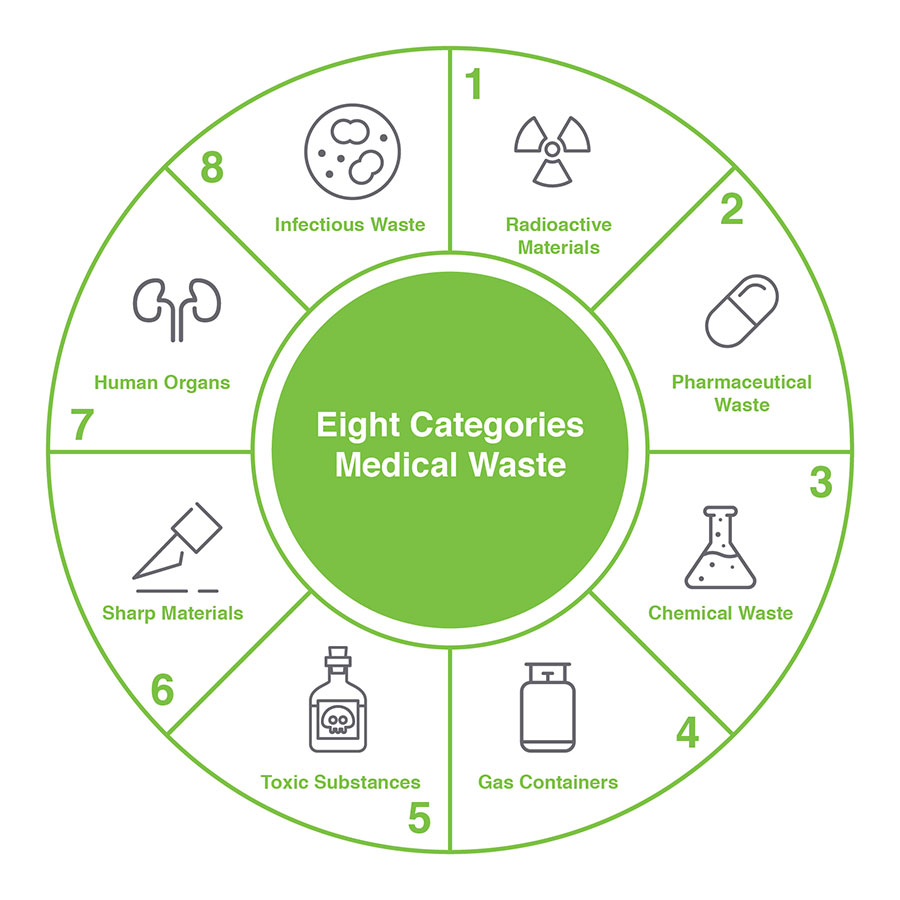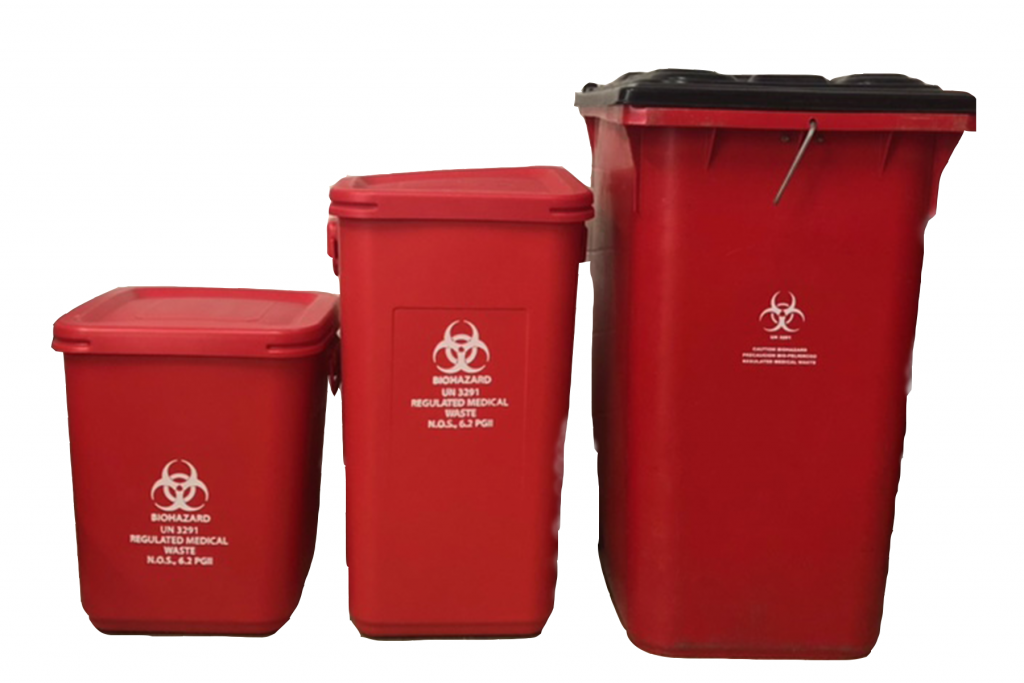Medical Waste Removal Quality: Elevating Safety And Security Requirements in Your Center
Medical Waste Removal Quality: Elevating Safety And Security Requirements in Your Center
Blog Article
Efficient and Eco-friendly Medical Waste Disposal Solutions
In the ever-evolving field of healthcare, the issue of medical waste disposal stays a subject of vital significance. As healthcare facilities, clinics, and other medical care centers aim to offer top quality patient care, they have to additionally deal with the obstacle of efficiently and responsibly disposing of their waste.
Waste Partition Practices
Reliable waste segregation methods are vital to make sure the appropriate and safe disposal of medical waste. Clinical waste, that includes products contaminated with possibly infectious compounds, need to be taken care of in a way that reduces the threat of harm to both public health and the atmosphere. Appropriate waste partition plays a crucial function in achieving this goal.
Waste segregation includes the separation of different types of waste based on their attributes and possible threats. This procedure makes certain that each sort of waste is treated and thrown away properly (medical waste disposal services with WasteX). It begins at the factor of generation, where medical care facilities should have marked containers and containers for various waste categories, such as sharps, contagious waste, pharmaceutical waste, and non-hazardous waste
By setting apart medical waste at the resource, doctor can avoid cross-contamination and decrease the threat of direct exposure to contagious agents. This technique likewise helps with the recycling and recuperation of particular materials. For instance, segregating and reusing clean plastics and glass reduces the need for raw materials and decreases the ecological effect of medical garbage disposal.

Autoclaving and Sterilization Methods
In order to make certain the secure and appropriate disposal of clinical waste complying with effective waste partition methods, healthcare facilities must utilize autoclaving and sterilization methods. Autoclaving is an extensively used method that uses high-pressure steam to sanitize clinical waste.
An additional frequently made use of sterilization technique is chemical sterilization. This involves treating the waste with chemicals such as ethylene oxide or hydrogen peroxide, which eliminate bacteria by disrupting their mobile framework. Chemical sterilization is commonly made use of for heat-sensitive things or materials that can not stand up to the heats of autoclaving. Nevertheless, it is important to note that chemical sanitation requires appropriate handling and disposal of the chemicals made use of, as they can be dangerous to human health and wellness and the setting otherwise taken care of correctly.
On-Site Waste Therapy Systems
Health care facilities have actually carried out on-site waste treatment systems to attend to the disposal of clinical waste in a secure and reliable fashion. These systems provide a convenient and affordable service for managing medical waste generated within the center. On-site waste therapy systems utilize numerous modern technologies to deal with and get rid of of medical waste on-site, lessening the requirement for transportation to off-site facilities.
One frequently made use of on-site waste therapy system is the microwave innovation. Another system is the chemical sanitation technology, which entails treating clinical waste with chemicals to eliminate pathogens and lower its dangerous nature. medical waste disposal services with WasteX.
On-site waste treatment systems use a number of benefits. To start with, they eliminate the danger of clinical waste being mishandled during transportation, lowering the potential for contamination and exposure to harmful compounds. Furthermore, these systems aid medical care centers adhere to waste management policies by supplying a reliable and hassle-free disposal approach. On-site therapy systems minimize the overall environmental effect of medical waste by minimizing transportation and the need for land fill room.
Recycling and Repurposing Efforts
As healthcare facilities pursue sustainable waste management methods, they are significantly discovering recycling and repurposing campaigns as a way of lowering the ecological influence of clinical waste. Reusing and repurposing efforts include discovering ingenious methods to reuse or transform medical waste into new products or products. This not just assists to reduce the quantity of waste that ends up in garbage dumps or incinerators however i was reading this likewise reduces the check this usage of raw materials and power required for making new items.
One instance of recycling in the health care sector is the reprocessing of single-use clinical gadgets. This not only minimizes the amount of waste produced but likewise conserves medical care facilities substantial costs connected with purchasing new tools.
An additional reusing effort entails the recycling of plastic containers, such as medication containers or syringe coverings. These containers can be gathered, arranged, and sent to reusing centers where they are processed, melted down, and changed right into new plastic products. This aids to conserve resources and minimize the need for virgin plastic production.
In addition to reusing, repurposing campaigns involve discovering different usages for medical waste. As an example, shredded paper waste from clinical documents or packaging materials can be repurposed as bedding product for pets or as insulation product (medical waste removal). Organic waste such as food scraps from health care centers can be composted and utilized as plant food in yards or farming areas.

Renewable Power Solutions
One reliable approach to alleviating the environmental effect of health care operations involves executing renewable resource services. Healthcare facilities, such as clinics and hospitals, take in considerable amounts of energy for various purposes, consisting of illumination, heating, cooling, and operating medical equipment. By transitioning to renewable resource resources, these facilities can considerably reduce their carbon impact and add to a much more sustainable future.

Applying renewable energy solutions in healthcare centers not only decreases greenhouse gas emissions yet additionally offers long-lasting expense financial savings. While the first investment in renewable resource framework might be higher, the lasting functional prices of renewable power systems are significantly lower compared to conventional fossil fuel-based energy sources. Furthermore, renewable resource systems are trustworthy and can give a continuous and steady power supply, making sure continual healthcare services even during power failures or emergencies.
Final Thought
In conclusion, implementing reliable and environmentally friendly medical waste disposal solutions is crucial for preserving a lasting healthcare system. By taking on waste segregation techniques, autoclaving and sterilization strategies, on-site waste treatment systems, reusing and repurposing efforts, and sustainable power services, medical care facilities can dramatically decrease their ecological impact.
It begins at the point of generation, where health care centers ought to have marked bins and containers for various waste groups, such as sharps, infectious waste, pharmaceutical waste, and non-hazardous waste.
In order to make certain the proper and risk-free disposal of clinical waste adhering to effective waste segregation techniques, healthcare facilities have to employ autoclaving and sterilization methods.Medical care centers have applied on-site waste treatment systems to deal with the disposal of clinical waste in a efficient and safe way. On-site waste treatment systems utilize different modern technologies to dispose and deal with of clinical waste on-site, minimizing the need for transportation to off-site facilities.
As health care centers make every effort for sustainable waste administration methods, they are progressively discovering recycling and repurposing campaigns as a method of reducing the environmental impact of medical waste. - medical waste removal
Report this page